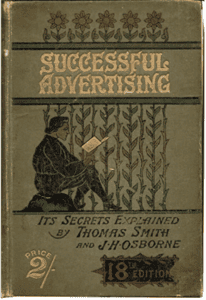Ever heard of the ‘Rule of Seven’?
It suggests that a prospective customer must interact with a brand at least seven times before they’ll make a purchase.
It makes a fair bit of sense when you think about it.
At least part of any purchase decision is the anticipation of product quality – how effectively will this product fulfil the function that I need it for?
Let’s say you’re buying a mattress.
All other things being equal – price, availability, stated benefits… would you buy a mattress from a brand you’d never heard of? Probably not.
Why is that?
You’re probably not a mattress expert. You probably haven’t bed-tested all mattresses on the market. You have no real way of knowing what mattresses are the most comfortable, or most conducive to a good night’s sleep, or most appropriate for your sleeping habits, body shape or skeletal issues. Much of your decision making is built on trust, gut feeling.
And there’s the thing. If you haven’t heard of a brand before, you won’t trust it.
It’s all about trust
The rule of seven says that it takes seven interactions before a consumer will trust a brand enough to buy it.
Interactions that include becoming aware of the brand, understanding the benefits it offers, becoming familiar with the brand, seeing evidence of performance etc. To a point when the prospective customer has confidence that they’d be making a good decision.
But I’d go further than that. For many purchases, particularly expansive or complex ones, or for more indecisive or passive consumers the number of interactions required before someone is willing to purchase, is way more than seven.
The key to successful advertising
As long ago as 1885, the issue of advertising familiarity had been recognised – by a fella called Thomas Smith, who wrote a book called “Successful Advertising”.
In it, he outlined how repeated exposure to the same message of the same message eventually leads to a sale. According to him (and we should be aware that it was a different time, in which there were far fewer choices available to consumers), the number of repeated exposures wasn’t seven = it was 20.
This is his description of how prospective customers react to advertising over time:
The 1st time people look at an ad, they don’t see it.
The 2nd time, they don’t notice it.
3rd time – they are aware that it’s there.
4th time – they have a fleeting sense that they’ve seen it before.
5th time – they actually read the ad.
6th – they thumb their nose at it.
7th – they get a little irritated with it.
8th – they think, “Here’s that confounded ad again”.
9th – they wonder if they’re missing out on something.
10th – they ask their friends or neighbors if they’ve tried it.
11th – they wonder how the company is paying for all these ads.
12th – they start to think that it must be a good product.
13th – they start to feel the product has value.
14th – they start to feel like they’ve wanted a product like this for a long time.
15th – they start to yearn for it because they can’t afford to buy it.
16th – they accept the fact that they will buy it sometime in the future.
17th – they make a commitment to buy the product.
18th – they curse their poverty because they can’t buy this terrific product.
19th – they count their money very carefully.
The 20th time your prospects see the ad, they buy what it’s offering.
From Advertising Frequency Theory, Thomas Smith, c.1885
A lot has changed in the last 138 years… but has it really changed that much?
So, to cut a long story short, the first time someone sees your ad, they don’t actually take any notice of it.
With continued exposure, they become more aware of the ad, then they might eventually read it, begin to consider the product, feel like they can’t live without it… until finally, they buy.
It doesn’t really matter exactly how many times they have to be exposed – that will depend on many, many factors. But in short, repetition leads to familiarity – and familiarity breeds trust.
It’s simple logic
So, it’s a pretty simple idea. The more often you hear an idea, a story, or a claim about a product, the more likely you are to believe it.
Of course, you could argue that if your message is strong enough, there’s less need to repeat it over and over – and that’s true, to a degree. The better the ad, the more likely we are to notice it earlier. And that may mean that we need to spend less money on advertising space, and we might get results a bit faster.
Beware of your own boredom
But remember we live in an overcommunicated society. Some sources suggest that we’re exposed to maybe 10,000 marketing messages every single day. For your prospects to hear you amongst the competition for their attention, for your message to land and sink in – you’re going to have to repeat it.
In fact, if you’re doing it right, you’ll get utterly bored of saying the same thing over and over.
You’ll want to change things up. Say something new.
Don’t.
When you find the message that resonates with your audience, don’t change it. Keep repeating it over and over until you’re so bored that you want to tear your own skin off.
And then keep going.
Whether it’s the rule of seven or the rule of 20, just remember that you’ve got to keep repeating your message. And that takes time.
Advertising is NOT a quick fix. It takes time to build salience in the mind of the customer.
You’ve got to repeat, repeat, repeat.
Have I made that clear enough?
Or do I need to repeat myself?


